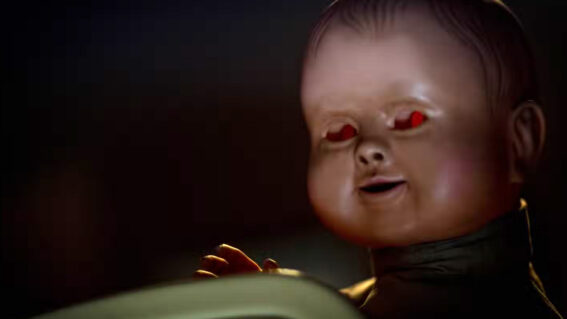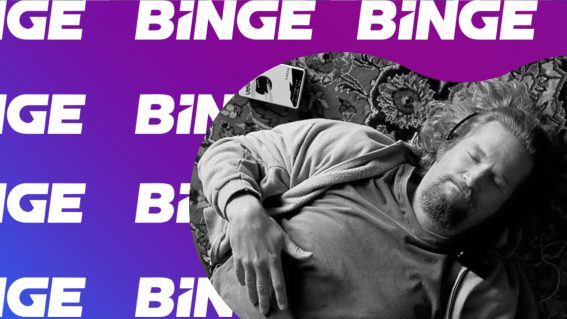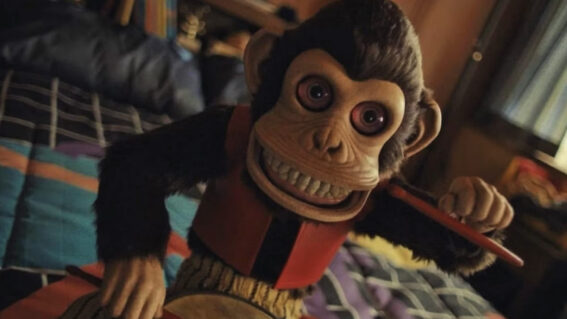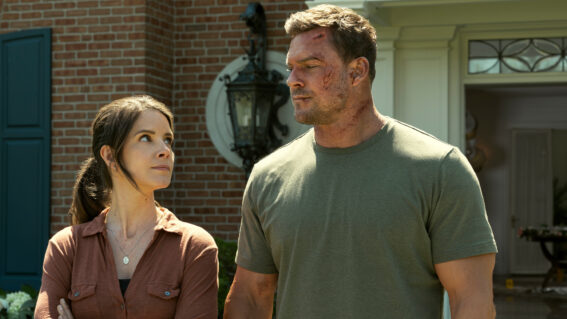Does Army of the Dead do justice to the zombie movie ethos?
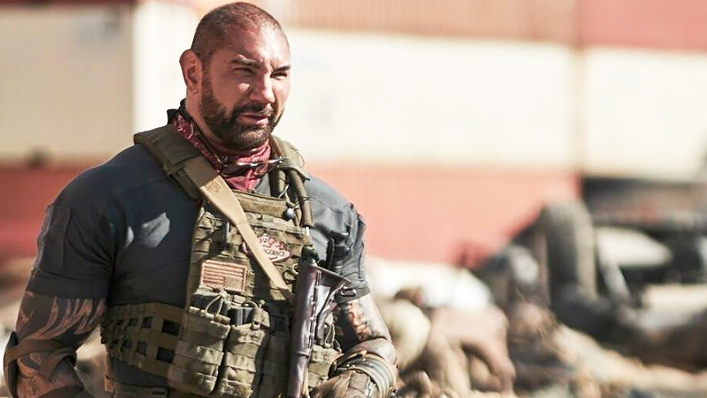
Zombies have organisational abilities and even fashion sense in Netflix‘s Army of the Dead. Does this constitute innovation or heresy? Critic Luke Buckmaster has the answers.
The defining scene from the defining zombie movie will always be the end of Night of the Living Dead: a shocking polemical moment in which its black hero is mistaken for a ghoul and shot dead. George Romero kickstarted the genre with a ballsier and more incendiary statement than any of its offspring, using flesh-chewing monsters as allegories for human experience—particularly in this first instance to make a blistering comment on racial relations in America.
See also:
* The 25 best horror movies on Netflix
* All new movies & shows on Netflix
Since then zombies have spread their manky mitts all over popular culture, evolving from the staggeringly slow “brrraaaiiinnns” type into slightly more humanistic forms—such as the kind in Zack Snyder’s new Netflix film, set in the apocalyptic ruins of an undead-infested Las Vegas. In this reality authorities did what they always should have: isolated the City of Sin from the rest of the world and let its feral inhabitants feast on with themselves, slobbering on pokie machines and chewing innards around the craps table.
The zombies in Army of the Dead have a social hierarchy, basic organisational skills, romantic and political allegiances, a fondness for Mahjong (alright, I made that one up) and even a degree of fashion sense, approximately on par with mine from my early 20s.
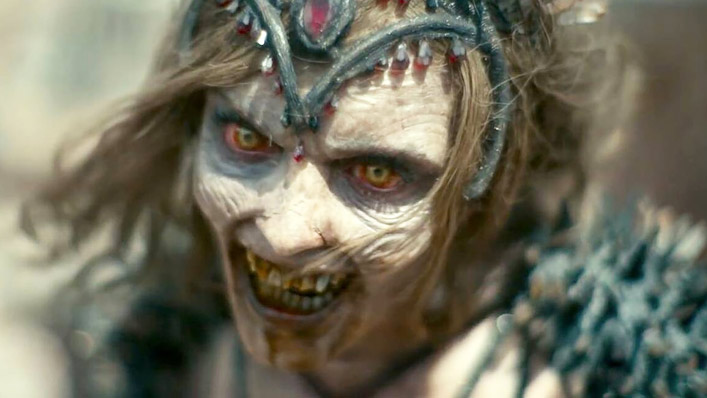
Aficionados of the undead sometimes argue such developments betray the zombie movie ethos and constitute heresy. But given the context in which the modern zombie picture emerged, with ghouls used to spark conversations about who we are as a species and how we treat each other, the opposite is true: every development that makes zombies more like people actually brings them closer to their origins.
I’d love to offer a similarly deep insight into the zombie tiger unveiled in Army of the Dead, which has ‘internet sensation’ written all over it. But my response was the same as everybody else’s: OOO LOOK, ZOMBIE TIGER! That thing makes the demonic strays from Pet Sematary look like plush toys.
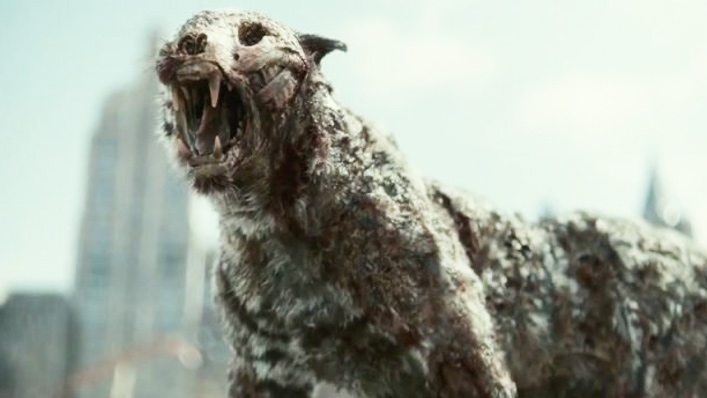
Given the setting, I half expected to see some Vegas personalities stumbling around and baying for flesh. Penn and Teller perhaps could have performed a new twist on the old three card monte: pick a card, any card, then ta-da, I’ll eat your fucking brains.
But Snyder is too cool for that. He treats his material very seriously and resists self-consciousness—unless in the case of classic songs you don’t expect to encounter in zeitgeisty movies. Then he’s into it big time. Think The Times They Are a-Changin’ in Watchmen or Everybody Knows in Justice League. Both these examples worked (the former brilliantly) despite being rather on the nose, lyrically tied to the visual scenario.
Elvis Presley’s empty ode to hedonism, Viva Las Vegas, plays over a mayhemic early scene in Army of the Dead, showing zombies feasting on casino guests including a man who struck jackpot playing the slots—making an incidental point (given the film is largely apolitical) that in this bright light city even winners are losers. This moment proves Snyder’s old retro jukebox routine still has gas in the cylinder: a fusion of sound and image that makes you sit up and take notice. But good lord, his lurch for the literal becomes embarrassing with the inclusion of The Cranberries’ Zombie, laid over a significant moment late in the piece.
If the director intended to engage with the meaning of that song, which is about baggage left over from the atrocities of warfare (“It’s the same old theme/Since nineteen-sixteen/In your head, in your head, they’re still fighting”) then he’s gone about it in a klutzy way. Using it in a movie about actual zombies strips the song of depth, reabsorbing meaning back to the surface. By that point in the running time a great deal of carnage has taken place, grand in scale, in a film that contains several good scenes (including a gripping all-too-brief helicopter moment) but is overlong and, like a lot of Snyder’s work, struggles with pacing.
The plot involves, like the under-rated and also insanely literal Hurricane Heist, an act of thievery underlined by the principles of disaster capitalism. When crisis strikes the populace are distracted—but those who know where the money is inevitably plot ways to drain it. Enter Tanaka (Hiroyuki Sanada), who approaches the very beefy mercenary Ward (Dave Bautista) with a plan to raid a casino vault containing 200 million big ones.
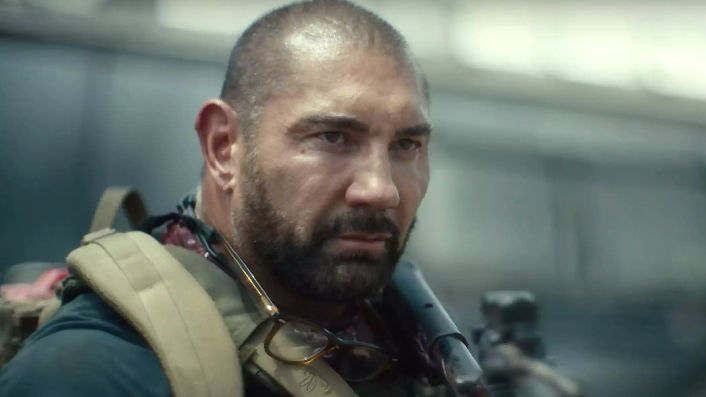
Ward assembles a team of mercs and specialists (safe cracker, helicopter pilot etc) who presumably haven’t seen Treasure of the Sierra Madre, or any film cautioning against greed, or any ‘one last job’ crime picture, or any zombie flick, or any…movie full stop. Many of them become chicken feed for the monsters, of course, much to the delight of audiences, who are as hungry for their demise as the zombies are for the innards.
The acting is passable, the action scenes workmanlike, the tone heavy but not grating. There’s a sense of restrained outlandishness throughout, present even in the oddly serene colour grading (you’ve never seen a zombie movie so…blue). Snyder doesn’t do subtle, and yet has nothing much to say despite the setting offering ample allegorical opportunity. Those after nothing but brain-chewing mayhem might recoil at such a suggestion, putting their nose up at a word like “allegorical,” not knowing or misunderstanding where the genre comes from. Like most of Romero’s descendants, Snyder wants the feast without the substance.


